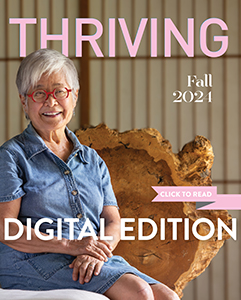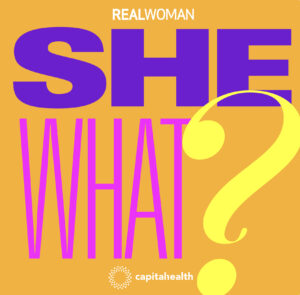At age 55, Carol Hess didn’t expect a heart attack.
She ate well, exercised regularly, and her high blood pressure was under control thanks to medication. She had no family history of heart disease and had quit smoking eight years before. And she hadn’t started menopause yet—a period when heart-disease risks increase for women.
But in the early morning of May 3, 2013, while in the shower before work, she experienced a pain in her jaw that traveled down to her chest. She knew right away what it was: a heart attack. “I just knew,” Hess explains. “It wasn’t like any pain I’d ever had. It wasn’t sharp. It didn’t go down my arm. It went from my neck to above my heart. I just knew.”
Hess woke her husband up, took an aspirin, and headed to Capital Health in Hopewell, N.J. After an inconclusive EKG, they did a second one, she says. “And then it turned into a fire drill. All of the sudden there were all kinds of people; they gave me nitroglycerin.”
The Trenton resident was sent straight to the cath lab, where a blockage was discovered in her left anterior descending artery. To open it, they put in a stent—“I asked if I could watch it,” Hess recalls. “I didn’t feel anything; it was like watching TV. From start to finish, it was about two hours.”
Because she listened to her body and acted on her pain, Hess’ story has a happy ending. Sadly, many women brush off the signs of a heart attack and don’t react quickly enough, in large part because women’s symptoms can be different from men’s. While intense chest pain can be a sign for both sexes, women are more likely to experience shortness of breath, nausea, and back and/or jaw pain. They’re also more likely to downplay their symptoms, telling themselves it’s acid reflux, the flu, or some other less serious condition. But time is of the utmost importance to heart attack victims: The longer they wait, the more damage is done. The more damage is done, the harder it is to fix it.
Tellingly, since 1984, more women than men die from heart disease annually. And 50 percent of women in an American Heart Association poll said they wouldn’t call 9-1-1 if they thought they were having a heart attack (the only mistake doctors told Hess that she made). On her website, TV personality Rosie O’Donnell wrote of her own heart attack in 2012, explaining that she Googled women’s heart attack symptoms, and while she had many of the symptoms, she convinced herself that she wasn’t having one. Although she took an aspirin, she went to sleep instead of going to the hospital.
Hess says her heart attack taught her to be more involved in her own healthcare—after she was released from the hospital, she immediately began researching her condition and every medicine she was on. “You need to be educated,” she says. “There are a lot of great websites out there—WebMD, Mayo Clinic—I tooled around so I could get a full picture of what was going on.
“You need to manage your healthcare,” Hess says. “It’s so important to know your body, so you need to be self-aware. You need to be familiar with how your body feels so you recognize when something isn’t right.”
Hess isn’t letting her heart attack define or slow her down. With a career in the medical device industry, she went back to work a couple of weeks after the event with a conscious effort to reduce her on-the-job stress. A month (and one nuclear stress test) later, she had the green light to start working out again at the gym. “You can’t be afraid of it,” she says. “If you break your arm once, you don’t run around thinking you’re going to break it again. It doesn’t have to be the defining moment of your life. You have more control than you think.”
Hess is right. All women, regardless of their risk factors, can take steps to reduce their chance of a heart attack or stroke: eating right, exercising regularly, reducing stress, and quitting smoking, for starters. Moreover, women need to pay attention to their bodies and schedule routine heart checks the same way they schedule routine gynecological exams. “It’s not easy. Everyone works or has kids,” Hess says. “But you have to take care of yourself.”








